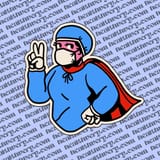Chilling Out with the Ice Hack Diet: Transforming Your Health One Cube at a Time
Discover the ice hack diet, a unique weight loss method using cold exposure to boost metabolism, burn calories, and unlock your body's full potential.

The ice hack diet, also known as the cold exposure technique, has been gaining popularity as a weight loss tool. This method centers on the idea that by exposing the body to cold temperatures, it will burn more calories and ultimately lead to weight loss. While some proponents claim that it helps boost metabolism and can even increase mental and physical stamina, others question the safety and effectiveness of this approach. In this post, we will dive into the ice hack diet, discussing the science behind it and addressing the potential benefits and risks associated with this method.
At the core of the ice hack diet is the concept of brown adipose tissue (BAT), a type of body fat that generates heat to keep our bodies warm. Unlike white fat, which stores calories and is responsible for weight gain, brown fat is activated when we are exposed to cold temperatures. This activation leads to an increase in calorie burn, as our bodies work to produce heat and maintain a stable internal temperature.
Proponents of the ice hack diet claim that by regularly exposing the body to cold temperatures, you can increase the amount of brown fat in your body and therefore burn more calories, leading to weight loss. Some common techniques include taking cold showers, ice baths, and even wearing ice packs. There are also wearable devices on the market that claim to help users lose weight through cold exposure.
Research on the ice hack diet has produced mixed results. Some studies have shown that cold exposure can indeed increase brown fat activity and result in calorie burning, but the overall effect on weight loss is minimal. A 2014 study published in the Journal of Clinical Investigation found that participants exposed to cold temperatures for several hours per day experienced an increase in brown fat activity, but the calorie burn was only about 200 extra calories per day. This suggests that while the ice hack diet may have some merit, it is not a miracle weight loss solution.
It is also important to note that the ice hack diet may not be suitable or safe for everyone. Cold exposure can put stress on the body, and for individuals with certain health conditions such as Raynaud's disease, heart issues or compromised immune systems, it can be potentially dangerous. As with any diet or lifestyle change, it is essential to consult a medical professional before beginning the ice hack diet to assess the potential risks and benefits based on your unique health profile.
Moreover, some critics argue that the ice hack diet promotes an unhealthy focus on quick fixes and short-term results, rather than promoting a sustainable and balanced approach to weight loss. A well-rounded weight loss plan should include a focus on proper nutrition, regular physical activity, and a healthy mindset towards body image and overall wellness.
In conclusion, while the ice hack diet may provide some benefits in terms of increased brown fat activity and calorie burning, it is not a magic bullet for weight loss. The effects of cold exposure on weight loss are relatively small, and the potential risks and discomfort may outweigh the benefits for many individuals. As always, it is crucial to maintain a balanced and sustainable approach to weight loss, focusing on a healthy lifestyle, proper nutrition, and regular exercise.





